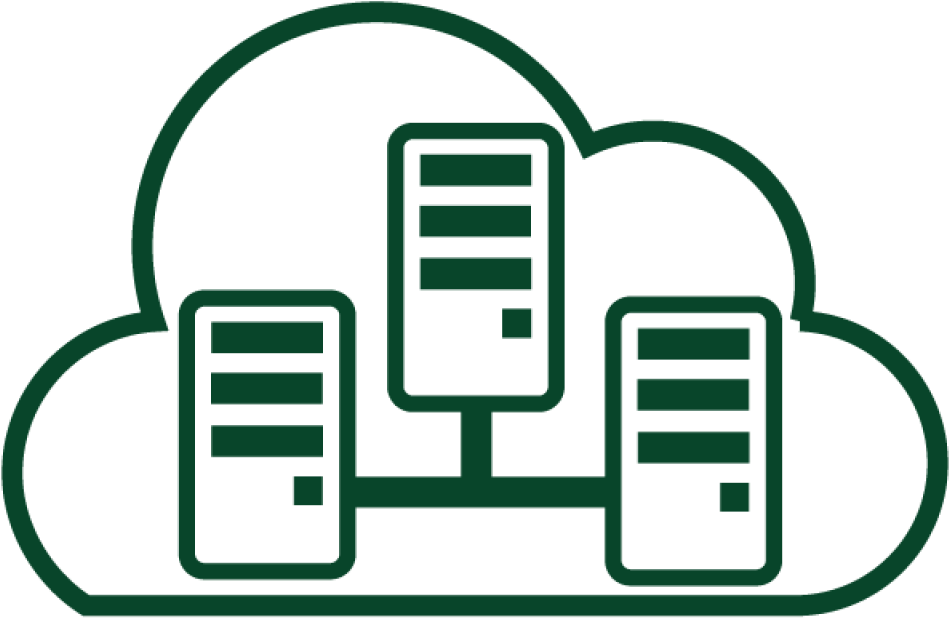Virtualization in Cloud Computing
Virtualization

Basically, virtualization renders a virtual image or “version” of a virtual image. Anything like a server, operating system, network, or storage unit tools so that they can be accessed at the same time on different devices.
Virtualization ‘s key goal is to control the workload to make it more flexible, effective and economical by converting traditional computing. Virtualization can be extended to a large variety of technologies, such as virtualization of the operating system, virtualization at the hardware level and virtualization of servers.
For cloud based solutions for the businesses like Google, AWS and Azure
What is virtualization in cloud computing?
Virtualization in Cloud Computing renders the server operating system and storage systems a virtual network. This would allow the user to share a single physical instance of a resource or programme with other users while having multiple devices at the same time. Cloud Virtualizations often handle the workload to make it more flexible, economical to effective by converting conventional computing.
It is based on three service models that are SAAS (software as a service), PAAS (platform as a service) and IAAS (infrastructure as a service). SAAS provides cloud customers with software to fully meet their desires and demands. PAAS offers a shared forum for cloud users from which they can run. IAAS offers protection and hardware to manage cloud resources. The basic premise is to share broad resource pools such as computing cycles or virtual CPUs (VCPUs), storage, software services, etc.
Cloud Storage may also be referred to as utilities and applications offered to serve the virtualized world. This setting may be either private or public. The client can optimise resources with the aid of virtualization and reduce the physical device that is in need. Click her for general IT Support services for Businesses
Why virtualization?
We can maximise the usage of capital with the aid of virtualization. In all of them, we are available to get more incentives.
For the following purposes, we can virtualize:
Separation between users: one user should be separated from the other users so that they do not get information about the data and usage of the other user and cannot even access the data of the other user.
Sharing of services: a vast resource can be divided into multiple virtual resources such that multiple users can use the technique of virtualization to use it.
Dynamic resources: It is very difficult to reallocate resources such as storage and computer resources, but if they are virtualized, they can be easily re-allocated.
Resource aggregation: With the help of virtualization, the limited resources available can be significantly improved.
Types of virtualization in cloud computing
Operating system virtualization
OS-level virtualization is also known as a form of virtualization technology that runs on the OS layer. The OS kernel here allows for the presence of more than one isolated user-space case. These instances are called virtualization engines or software servers. In other words, a single operating system can operate the OS kernel and include the features of the operating system to duplicate each of the separated partitions. Click here to purchase any IT related software or hardware
Uses of OS virtualization
- Used in an environment for automated hosting.
- Used by a significant number of distrustful consumers for the protected allocation of scarce hardware resources.
- It is used by the system administrator to combine server resources by transferring facilities to distinct hosts.
- Improvised encryption by splitting multiple apps into multiple containers.
- This virtualization types do not require hardware to function effectively.
Server virtualization
In Cloud computing server virtualization, the programme is mounted directly on the server system and can be broken into multiple servers on demand and balance the load using a single physical server. It may also be claimed that the virtualization of the application masks server resources consisting of numbers and identities. The system administrator splits one physical server into several servers with the help of software.
Uses of server virtualization
- Higher server ability
- Cheaper operating costs
- Eliminate server complexity
- Increased application performance
- Deploy workload quicker
Hardware virtualization
Cloud Computing hardware virtualization, which is used in the server platform since it is versatile to use virtual computers rather than real machines. Virtual machine software is built in the hardware device in hardware virtualizations, which is known as hardware virtualization. It consists of a hypervisor that manages the operation, memory, and other hardware resources and tracks them. After the hardware virtualization process is finished, the user can instal the different operating system in it and use multiple applications for this platform.
Uses of hardware virtualization
- Lower expense: The expense falls due to cloud consolidation; it is now feasible for several operating systems to live together in a single hardware
- Increasing The flexibility: Virtualization has made it easier to quickly build hardware infrastructure, and infrastructure can now be handled consistently.
- Productive use of resources: Across virtual machines, physical resources may be exchanged. The unused resources reserved by one virtual machine can, if necessary, be used by another virtual machine.
Storage virtualization
It pools physical data from multiple storage units on the network and makes it look to be a single storage facility handled from a single console. As we all know, there has been a close connection between the physical host and the storage system built locally; and local storage is no longer needed with the paradigm shift. Through an improvement in functionality, more specialized storage has come to the market.
Uses of storage virtualization
- Reduce hardware and resource costs
- Improve reliability and performance
- Improve agility and ability to scale
Security issues in virtual cloud
The cloud computing virtualized architecture provides the cloud user with many advantages, but the protection of the cloud user the responsibility shared between the cloud customer and the cloud provider is the cloud. The Cloud User computers are not aware of the security policies that are secured by their VMs. Click here for cyber security related issues of businesses
Hypervisor Vulnerabilities: For only one reason, the hypervisor attack is a possible target for hackers, having entry to the hypervisor layer gives access to the hypervisor ‘s underlying layers and hence provides access to the hacker on virtual machines mounted on the actual host server. If the hypervisor layer is breached, the intruder will target all virtual machines and their running operating systems and applications and thereby break the security of the entire virtualized world.
Virtual Machine Vulnerabilities: As it is apparent a virtualized cloud system will contain different VM images and not all of them will be operating at once, some of them will be offline and some of them will be online. They are all vulnerable to severe vulnerabilities at either point, whether offline or online. The hacker can obtain access to the physical device through any attack on the active VM.
Virtual Network Layer Vulnerabilities: Virtual Network Layer Bugs are often susceptible to a range of attacks on the virtual network layer or the vSwitch layer. Such attacks can be vSwitch settings, manipulation of VLANs, Confidence Zones and ARP tables.
Multiple Users: A virtualized cloud layer such as IaaS can house multiple virtual machines and offer multiple connections to various users from all over the world. Data leakage and hence raises the risk of VM-to-VM attacks. If you have any problems with such type of threats please contact Benchmarkitservices(Professional IT support).

